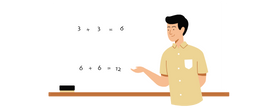The following art works all depict the human physique: Woman of Willendorf, Paleolithic, 28,000-25,000 BC, Queen Khamerernebty, Egypt, 2490-2472BC, and the Dying Warriors of both east and west of the Temple of Aphaia (Archaic and Classical Greece respectively, 480 and 490 BC, respectively). These images, as well as their more specific details, can be used to illustrate how cultural views of body image change over time.
The Woman of Willendorf also known as “Nude Woman” is one of many oldest pieces of contemporary art. Her height is 11 cm and she is made from limestone. We don’t know enough about her to draw any significant conclusions. We have however “assigned” meanings to her in order to fulfill these gaps. A few other figurines, also from the Ice Age, were discovered. They were all of women, highlighting breasts and curvature. Venus, the goddess fertility and love, has been associated with the Woman of Willendorf. The facial details of the figure are not visible. The figure does have an exaggerated stomach, breasts, and vulva. This could be a clue that fertility might be the symbol. What does all this tell us? Perhaps strong women were more fertile than those who were smaller and had the ideal size. Maybe fertility is the only purpose of a woman. Larger women might have been considered healthier. This is not a complete history of human sculpture, but we have some ideas. Pharaoh Menkaure the Egyptian Statue of Egypt and Queen Khamerernebty provide us with an example of high-figure males or females during Pyramid ages. Menkaure and Queen Khamerernebty are standing side by side in sandstone. Menkaure is able to see their left feet in the air, while Queen Khamerernebty may be Menkaure’s Mother. Their almost-stoic expressions and gazes forward give them a feeling of “otherworld” – they’re in motion, stepping into the infinite, and we are just watching their beauty. Menkaure’s face is very unique. Menkaure’s smooth skin is free from imperfections and his structure is strong. It makes him look young. He wears the traditional pharaoh hat, which has the royal beard firmly in place. He also holds ceremonial cloths.
His queen is beautifully constructed. She is an elegant woman, her breasts are exposed by her clinging dress, and she has a unique, mature face. We are awestruck by these beautiful figures, but they do not look like typical royal art. They are individual beings, suited for their respective roles. We can easily compare Egyptian art to artwork from previous periods. Our ideals, style and meanings have been influenced by Egyptian culture.
We are able to see the evolution and development of Greek sculpture by looking at the Dying Warriors of both East and West Pediments from the Temple Aphaia. The West Pediment was created in 490 BCE. This is only one of many parts of the lively Trojan War-scene scene pediment. This warrior is now fallen. He has been immobilized in his chest. He is trying take the weapon out of him chest but he will likely pass away. He’s fumbling with his legs, almost as if he is trying to hold a pose. Although this artwork represents a wounded fighter, it is not realistic. It represents a wounded warrior who uses limited expression.
The East Pediment is a far more detailed rendering of a suffering warrior, which was approximately ten-years later BCE. Our body’s muscle and skin movement is more natural than ever. This makes bodily movement much more plausible. This work was inspired by the artist’s thoughts about falling. Our archaic smile is gone, marking the start of the Classical Period. The soldier lifts himself up with the shield to add to the scene’s imagery. This defeat is felt, and emotional concepts that were explored in the Hellenistic Period, and beyond, are more fully explored.
We’ve only looked at a few examples of cultural ideas about the body changing over time. In order to understand certain aspects of human bodies, developing cultures have developed specific values and messages. A “Woman of Willendorf” (now called the “Woman of Willendorf”) was an image of a human being. She was, in fact, a woman. Perhaps this is a metaphor or symbolism that relates to fertility. We are now seeing Egyptian pharaohs. Art can be used to represent political hierarchy, religion, individualism, and body ideals. Further forward, war politics is being represented in art. There are many expressions of detail and life, as well as fierce propaganda exploration.
